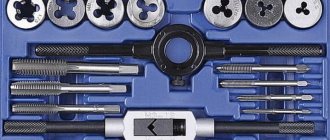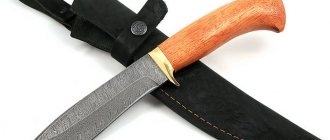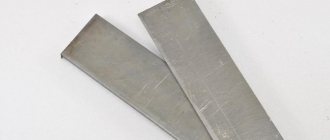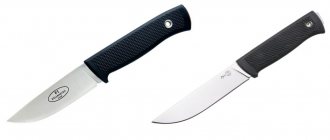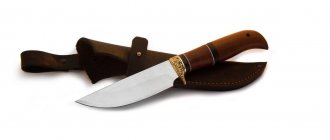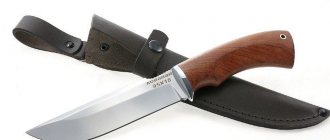Grain processing is one of the leading types of business in many countries. Not only large enterprises are engaged in the production of flour and other products. Small agricultural firms equipped with compact flour-grinding equipment successfully compete with them. In Russia, the need for mini-mills increased in the late 90s, which led to the emergence of numerous developments of equipment in this category by different manufacturers. It is easy for a farmer or company to select a mill model with optimal performance and the required set of functions.
To produce flour-based food products, varietal and wallpaper grinding of wheat or rye grain is used. Cereal grains are hard and tough, and have a structure that is heterogeneous in strength and density. Therefore, equipment for processing crops must meet a number of requirements, the main one of which is the sufficient completeness of the technological line.
The process of grinding grain to the desired fraction is handled by mini-mills equipped with roller machines (roller mills). Mills have a mechanical effect on grains and destroy their structure . Modifications of equipment with a different number and arrangement of rollers, type of feeding mechanism and rest of the working rollers (manual or automatic) are supplied to the market. Despite the variety of models, the operating principle of all devices is the same.
Types of hand mills
The models of hand mills offered today contain quite a lot of differences, both in functional purpose and in the quality of the materials from which they are made. The most universal options, in addition to the minimum set of functions, may contain additional elements that allow, for example, simultaneous grinding and flattening. If the set comes with a grain press, it becomes possible to prepare flakes.
By purpose
The main division of hand mills by purpose is their intended use:
- for preparing flour;
- for grinding spices.
From the corresponding cereals (corn, rice, buckwheat, barley and others), as well as legumes (peas, beans, beans), by hand grinding you can obtain substances of both large and small fractions, depending on the recipe recommendations. The possibility of obtaining such fractions is especially valuable for dietary purposes. So, if you need to prepare confectionery products, you should resort to the finest grinding. For porridges, soups, casseroles, and certain complex fillings, it is better to prepare medium or large fractions, preserving as much as possible the set of nutritional properties and vitamins.
Typically, such mills are equipped with a special sieve (for the purpose of cleaning the resulting fractions from large particles). Ultimately, the specific gravity of the finished product is 80%. This is flour of uniform consistency with particle size depending on the initial characteristics of the grain.
The most relevant today are millstones made from an alloy of corundum and ceramics. It is reliable, durable, rational. Optimum wear resistance is ensured at a relatively inexpensive price.
Grinding spices using hand mills can be done before preparing a dish, immediately at the time of serving, or for temporary storage. In the latter case, specific organoleptic properties are gradually lost, that is, the spices “dissipate.” To preserve the original zest and brightness of taste, it is better not to resort to this storage method.
It should be remembered that it is not recommended to grind spices based on oilseed components or spices in a hand mill (for example, nuts, mustard, sunflower seeds, flax seeds). This is explained by the fact that oily deposits accumulate on the millstones, clogging them and preventing further efficient operation. If this is still necessary, it is worth mixing the oilseed crop, for example, with grain or flakes.
For flour
For spices
By functionality
If we talk about the functionality of devices, they can be divided into the following types:
- disposable;
- reusable.
Since it is optimal to grind grains and spices immediately before using them, for the convenience of users, components are now commercially available already placed in so-called disposable manual grinders. More often they are made of glass, food-grade plastic, less often - wood, metal. The principle of operation of such a device is simple: by turning the lid clockwise, freshly ground ingredients fall into a plate or pan through the holes made in it. As the entire mass inside is crushed, the empty container is disposed of.
These mills are small in size, their shape is convenient to grasp with the hand, they are easy to clean externally, and have a stable base. A positive feature of such an item is the benefits of freshly ground products. However, naturally, the price of the components to be crushed is significantly higher than buying them in regular weight packaging.
Reusable mills are sold without filling. They have special holes for filling and consist of a knife (millstones) and a container for the crushed product. Manufacturing materials are very different, from wood of fragrant species to high-quality food steel. The operating mechanism is similar to single-use models, with the difference that the resulting product is poured into a storage container.
The internal parts of such models are more practical than those of disposable ones; they are designed for successful operation over a certain period of time. However, depending on the hardness of the products being ground, a change of millstones is still provided. Yes, and the body can receive mechanical damage.
When using reusable mills for multi-profile work, their mechanisms should be thoroughly cleaned so that the remnants of the previous grinding do not get into the new flour, transmitting their odors and tastes.
Reusable
Disposable
Housing material
The best material for the body of a hand mill is wood. The most popular raw materials for these purposes today are beech, pine, and linden. The production of such household kitchen appliances is carried out by both famous manufacturers (for example, German companies) and folk craftsmen. Professional products have a longer service life, since the raw materials undergo additional processing with special compounds, wax, and natural oils. A hand-held grain mill may have a cedar or other sturdy wood finish.
The use of wooden materials determines not only environmental friendliness, practicality and the necessary hygienic characteristics of the product, but also the fight against noise. If the model is manufactured correctly, the noise level during operation should not exceed 72 dB.
Cheaper options are mills made of veneer, plastic, glass, and ceramics. However, such materials have insufficient resistance to mechanical damage, are unreliable and therefore have a short service life. In addition, low-grade plastic is able to absorb odors and retain them for a long time.
There are also metal models that are resistant to mechanical stress and, due to their significant weight, physically facilitate the grinding process. However, such material is not an environmentally friendly raw material.
Wooden
Plastic
Glass
Metal
Disadvantages of the unit
Almost all roller mechanisms have a common negative action factor, which is close contact with raw materials. Mechanical impact on the material is accompanied by adhesion of crushed particles on the surface of the rolls. Since some technological processing modes involve moistening the working parts, after completion of the procedure the surfaces are completely covered with the final product. There is also a relatively modest degree of grinding in roller mills, which forces designers to experiment with the same increase in the number of crushing units.
In general, this equipment is considered outdated and does not meet new requirements for the production of crushed materials. On the other hand, the simplicity of the design and the ability to maintain high productivity with optimal unit sizes still maintain the demand for roller machines.
What can millstones be made of?
You can understand what qualities millstones should have based on the definition of their function. Thus, the encyclopedia defines a millstone as a pair of stone circles into which grain is first poured, and then, using rotation, it is ground to a floury consistency. Since their appearance, millstones were made first from hardwood, and later with inserts made of metal or other, more durable materials.
The characteristics of the millstones are actually the quality of the grinding. They, acting as a grinder, transform whole grains or other components into a fine fraction.
The diameter of the millstones directly affects the efficiency of the resulting product, as well as the force required to rotate the handle of the mini mill. In addition, the millstones must be properly balanced and made from hard and durable materials. So, if plastic millstones are acceptable in disposable mills, then it is better to choose reusable models with parts based on granite, basalt or ceramics. These are the options that are reliable and environmentally friendly. Corundum millstones allow you to obtain effective grinding even with little effort.
Today, mills with millstones made of solid quartzite, which is highly environmentally friendly and reliable, are offered for sale. Such options, like those made from natural granite, have excellent water-repellent properties, which play an additional important role in extending their service life and obtaining a high-quality product. Granite millstones are also advantageous because they do not require periodic sharpening: the process of sharpening occurs spontaneously.
When choosing millstones, you should pay attention to their two-row nature. This option is ideal for ensuring high-quality grinding and waste-free process.
There are also combined options, for example, stone millstones and rollers made of food steel. Purchasing these mills will help produce both flour and flakes.
Requirements for raw materials
The following requirements are presented for grain, as a raw material for the production of flour:
- the amount of moisture in soft wheat varieties is 14.5%, in hard varieties – 15%;
- volumetric weight – 750-850 g/l;
- presence of organic and inorganic impurities – no more than 1.5%;
- amount of metallic inclusions – maximum 0.02%;
- volume of mineral impurities – 0.3%;
- quantity of cockle – 0.5%;
- volume of germinated grains – 0.3%.
Instructions for making feed flour
A flour mill can process grain of exceptionally high quality, which has no signs of spoilage. Also, the raw materials should be free of foreign matter and mold.
For what purposes can it be used?
Grinding grains (or spices) manually has not only economic benefits. It is much more important that the person taking such actions is firmly confident in the quality and safety of the raw materials used. So, for people who need a gluten-free diet, healthy ingredients can be used as bread flour, which will be ground in an environmentally friendly mill.
To grind spices, the housewife uses only pure original raw materials, possibly collected with her own hands and dried according to the rules (to preserve their nutritional properties). Grinding done directly during the cooking process will fully preserve the full value of nutritious foods.
Individuals involved in improving their intestinal health will also benefit. By receiving coarse flour and using it to bake bread or prepare pasta, they help their digestion processes and improve metabolism in the body.
Crushed grain from malt is effectively used for brewing homemade beer, and the use of cereals rarely used for porridges as an additive to bread allows you to pamper the body with a full range of natural vitamins, microelements, and dietary fiber.
Control system
Modern mill models provide electronic process control with automation elements. The operator can adjust the speed of movement of the rolls, the rate of supply of raw materials into the loading neck, the rotation parameters of the separator rotor, grinding characteristics, etc. In automatic mode, air flows are adjusted with grinding pressure. Having set the initial data, you can expect to obtain the desired particle size distribution at the output of the product without interfering with the work process. Since roller mills operate at high power and are connected to three-phase networks, they are required to be provided with protective devices. They also operate automatically in cases of short circuits, motor overheating or severe voltage fluctuations in the network.
Manual or electric - which is better?
The preference for a manual or electric mill can be determined from various positions. No one will argue that when time is short, automated kitchen processes bring great help to housewives. The electric mill is modern, functional, efficient and aesthetic. It allows you to produce a supply of the necessary flour in a short time. However, labor productivity is not always assessed by the housewife in the first place. A home flour mill with manual control mechanisms, although it significantly slows down the result, increases the energy component that the product can only receive from human participation. In addition, it is always at hand, does not require preparatory work to connect to electricity, and can be used outdoors or in other conditions in the absence of electric current.
It is impossible to overestimate the fact that only when using the manual version can you prepare a mixture, for example for porridge or bread, with a clearly defined proportion of components. Compliance with such dosages is the key to good health and disease prevention.
Of course, you should not use such a technique if you have to make significant reserves of flour or grind cereals for cooking on a large scale. But, if cooking is done for yourself or members of your small family, this is completely justified.
There are also options that use combined control methods. So, in addition to manual, it is possible to start the mill using a screwdriver, drill or a special adapter.
There are also devices that have two mechanisms: manual (in case of a power outage) and electric. At the same time, one of the important characteristics should remain the compactness of such a model.
Manual
Electric
Business Features
Household grain processing mills are capable of processing large volumes of raw materials. This value can reach 0.5-1 t/h, which is a very good indicator. To start production from scratch, you need to invest at least 50 thousand dollars (provided you have your own or rented premises without the need for major repairs). Under other circumstances, the starting capital needs to be increased several times. Despite this, small capacity flour mills have numerous advantages:
- if necessary, all equipment can be upgraded and its profile changed;
- low operating costs, which leads to low production costs;
- there is no need to hire a large staff of service personnel and qualified specialists in order to set up a mini-production of the required capacity;
- the ability to produce a variety of products that are in demand at this particular time;
- such a plant can be located near the source of raw materials for production, which will reduce transportation costs.
Simple things of flour production
Rules of operation and care
Knowledge of the rules of proper operation and high-quality care of hand mills will increase their service life and guarantee the safe composition of the resulting product. The main points include:
- monitoring the integrity of the hull and timely elimination of external damage;
- careful adherence to sanitary and hygienic treatment and disinfection regimes (if necessary);
- strong fastening of the mill to the base at the time of use (to prevent distortion of the structures);
- regular cleaning of millstones and storage containers from residual raw materials and flour;
- degreasing and drying all components of mechanisms;
- proper lubrication of rubbing parts (if any) with gentle compounds approved for food use;
- compliance with basic safety rules when working with rotating mechanisms.
The use of hand-ground products in cooking is a confirmation of the housewife’s love and care for her household, her desire to make the diet tasty, healthy, nutritious and safe.




